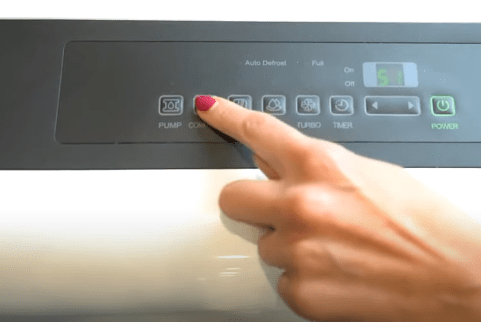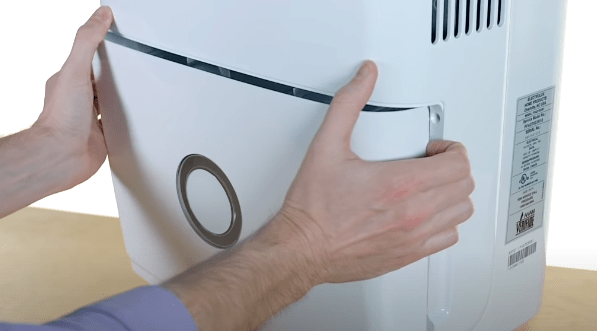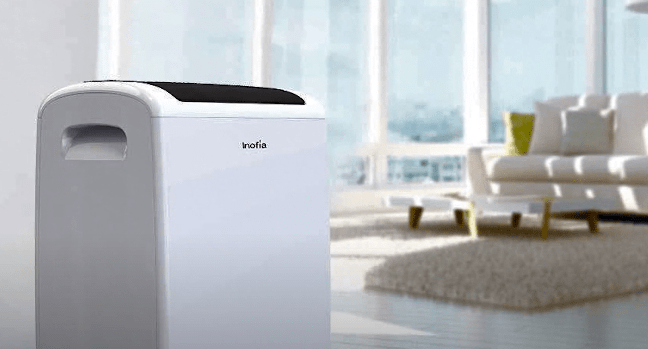Have you ever felt the discomfort of a muggy, damp environment that seems to sap the energy right out of you? Well, you’re not alone. I’m Mannan Wasif, and I’m here to connect with you on a topic that often goes unnoticed but can significantly impact our daily lives – dehumidifiers.
Before we dive into the specifics, let’s take a moment to recognize the importance of maintaining a healthy and comfortable living space. After all, our well-being is closely intertwined with the quality of the air we breathe, and that’s where dehumidifiers come into play.
As someone who’s been passionate about solving common household challenges, I understand the problems that can arise when dealing with dehumidifiers. These inconspicuous appliances often work silently in the background, but when they do their job effectively, the difference is palpable.
So, let’s embark on this journey together. I’ll guide you through the ins and outs of dehumidifiers, starting with a fundamental question: “how long does it take for a dehumidifier to work?“
In this blog post, I’ll unravel the mysteries of dehumidifiers and explore their role in maintaining a healthy indoor environment. I’ll break down the factors that influence their performance and efficiency, ensuring that you have all the knowledge you need to make the most of this essential home appliance.
So, stay with me as we delve into the world of dehumidifiers and discover how they can transform your living space for the better. Let’s get started!
How Long Does It Take for a dehumidifier?
When it comes to achieving your desired indoor humidity level, the size of your dehumidifier and the current humidity level play pivotal roles in determining the time it takes to work its magic. Typically, most units require about 12 hours to kick into high gear and effectively start extracting moisture from the air. However, in larger spaces with higher humidity levels, it might take a bit longer.
Many dehumidifiers come equipped with a handy humidistat, which allows you to fine-tune and maintain your desired humidity level. If you’re not seeing the results you expect, it might be time to make some adjustments to your dehumidifier’s humidistat.
The U.S. Department of Energy is revising dehumidifier test procedures. Changes include adopting industry standards, modifying the rating test duration, allowing sampling trees with sensors, and specifying network-capable dehumidifier testing.
1. Dehumidifier Capacity

The capacity of a dehumidifier refers to how quickly it can whisk away moisture from a room. It’s measured in pints of water removed per day, and most dehumidifiers fall in the 15 to 30-pint range.
For example, a 30-pint dehumidifier set to a 50% humidity level can extract up to 15 pints of water daily. In most homes, a smaller unit, such as a 15-pint dehumidifier, should suffice unless you live in an exceptionally dry climate.
2. Dampness Level

The level of dampness in your home is another crucial factor. You can gauge this by following the EPA’s guide. The damper your space, the longer your dehumidifier will need to work its magic.
To expedite the process, consider a dehumidifier with a built-in pump, which efficiently removes moisture and directs it outside. This can significantly reduce the time it takes to achieve optimal humidity levels.
3.Water Tank Size

Don’t overlook the size of your dehumidifier’s water tank. Most units hold 2 to 3 pints of water, meaning you’ll need to empty it regularly if your dehumidifier extracts more than that amount daily.
Some dehumidifiers, however, allow you to empty the tank while they’re still running, saving you precious time.
Other factors that affect the dehumidifier’s life cycle
The following are some factors that will affect the dehumidifier’s life cycle:
1. Dimensions of the room

The size of the room where you place your dehumidifier matters. In larger spaces, it takes more time for the dehumidifier to circulate the air, remove moisture, and make a noticeable impact on humidity levels.
Smaller rooms will see quicker results as the dehumidifier can cover the space more efficiently.
2. The temperature of the surrounding area

Temperature plays a significant role in the dehumidifier’s performance. Dehumidifiers work by cooling the air to condense moisture, and this process is less efficient in colder environments.
In colder areas, the dehumidifier may take longer to remove the same amount of moisture compared to a warmer setting.
3. Location of the dehumidifier

The location where you position your dehumidifier can affect how long it takes to operate effectively. Placing it in high-traffic areas or near doors and windows where outside air can infiltrate can extend the time it takes to achieve desired humidity levels.
For best results, choose a central location within the room.
4. Interior design

The layout and clutter within a room can impact the dehumidifier’s performance. Cluttered spaces may have restricted airflow, making it harder for the dehumidifier to reach all areas and efficiently extract moisture.
It’s advisable to clear clutter and create an unobstructed airflow path for the dehumidifier.
5. The region of the country

The climate of your region can significantly affect your dehumidifier’s efficiency. In dry climates, where the air naturally holds less moisture, dehumidifiers tend to work faster since there’s less moisture to remove.
Conversely, in humid climates, the dehumidifier may take longer to reduce humidity levels because there’s more moisture in the air to extract.
Regular Maintenance for Dehumidifier Efficiency
Regular maintenance is a critical aspect of ensuring your dehumidifier operates at its peak efficiency. Neglecting maintenance tasks can hinder its performance and lead to increased energy consumption. Two key maintenance activities to focus on are:
- Cleaning Filters: The filters in your dehumidifier can accumulate dust, allergens, and debris over time. When these filters become clogged, airflow is restricted, which impairs the dehumidifier’s ability to effectively remove moisture from the air.
To maintain optimal efficiency, it’s essential to clean or replace the filters on a regular basis. By doing so, you ensure that the dehumidifier can operate efficiently, providing better humidity control and saving energy.
- Coil Maintenance: The coils in a dehumidifier play a crucial role in cooling the air and condensing moisture. Over time, these coils can become dirty, which insulates the cooling surfaces and makes it more challenging for the dehumidifier to extract moisture effectively.
Cleaning the coils periodically is essential to maintain their efficiency. By doing this, you ensure that your dehumidifier can operate at peak performance, removing moisture from the air more effectively and efficiently.
Investing in an Energy-Efficient Dehumidifier
In addition to regular maintenance, choosing a dehumidifier with energy-saving features can further enhance its efficiency. Here’s why investing in such a unit is a wise choice:
- Customized Operation: Many modern dehumidifiers come equipped with advanced features such as programmable timers and humidity sensors (humidistats). These features allow you to tailor the dehumidifier’s operation to match your specific needs and preferences.
For example, you can program it to run during peak humidity hours and turn off during drier times or at night. This customization reduces overall electricity consumption and ensures that the dehumidifier is only operating when necessary.
- Optimized Performance: An energy-efficient dehumidifier not only saves on electricity costs but also maximizes performance. By using humidity sensors, it can maintain your desired humidity levels more accurately and consistently. This means it will operate at just the right times and at the right intensity to keep your indoor environment comfortable and moisture-free.
How Long Should A Dehumidifier Run Per Day?
The duration your dehumidifier should run depends on your specific needs. In most cases, experts recommend running it for about 12 hours daily.
However, if your space is exceptionally humid, it might take up to 24 hours to achieve the desired results. Be sure to check your water tank’s capacity to avoid constant emptying.
Should a Dehumidifier Run All the Time?
Running a dehumidifier around the clock is not advisable as it can lead to higher utility bills and overly dry indoor air. Only run it continuously in cases of floods, leaks, or extreme humidity issues. Otherwise, opt for shorter, strategic periods during off-peak hours.
When should you use a dehumidifier?
You should consider using a dehumidifier if you notice:
- Wet or moist stains on walls or ceilings.
- A stuffy, uncomfortable atmosphere.
- Condensation on windows.
- Musty odors.
- Visible mold.
- Excess moisture.
Should I run my dehumidifier during the winter?
During the winter, when the air is naturally dry, running a dehumidifier is typically unnecessary. Instead, consider using a humidifier to add moisture to the air and alleviate common winter discomforts like dry skin and nasal issues.
How quickly should a dehumidifier fill up?
On average, it takes about 6-7 hours for a dehumidifier to fill up with water. However, this estimate can vary based on the dehumidifier model and the moisture content in your air.
How long do I need to use a dehumidifier after a leak?
The effectiveness of a dehumidifier after a leak can range from a day to a week, depending on the severity of the situation. Larger water-related incidents may take longer, while small leaks could be resolved in a day. Regularly monitor humidity levels and the water tank to gauge progress.
What time of day to run a dehumidifier?
The best time to run a dehumidifier is typically between 10 p.m. and 7 a.m. during off-peak hours when condensation and moisture are more likely to infiltrate your home.
These hours are ideal for bedrooms and quiet areas.
Should you run a dehumidifier with the windows open?
Running a dehumidifier with open windows is counterproductive, as it allows external temperatures and humidity to enter, potentially promoting mold growth.
Does a dehumidifier cool a room?
Dehumidifiers primarily tackle high humidity, which can create discomfort. By reducing humidity, they can make a room feel cooler and more comfortable.
Final Thoughts
To ensure your dehumidifier works efficiently, limit its use to 12 hours a day, considering its capacity and your room’s humidity level.
Over time, your dehumidifier will work tirelessly, maintaining optimal indoor air quality and banishing excess moisture.

He is a mechanical engineer & our expert team member with over four years of experience who provides comprehensive and informative guides on various home improvement topics. From DIY projects to professional installations, he strives to give readers the knowledge and tools they need to make informed decisions and successfully complete their home improvement projects.
His goal is to empower homeowners to create the home of their dreams, while also increasing the value and functionality of their property. Whether you’re a first-time homeowner or a seasoned renovator, he has something for everyone.
